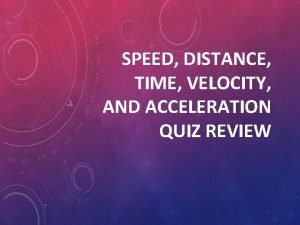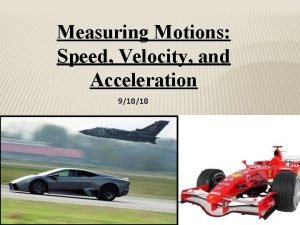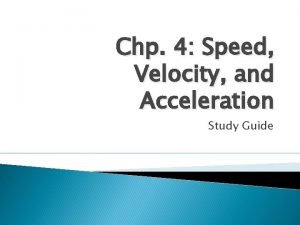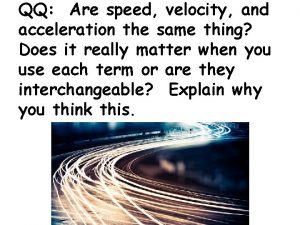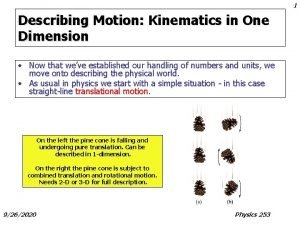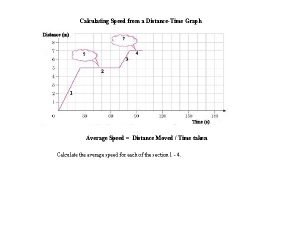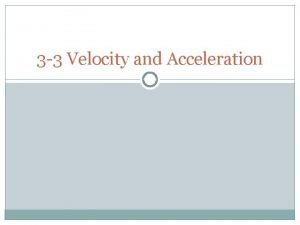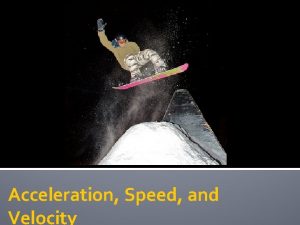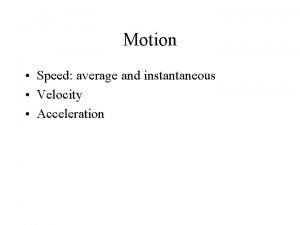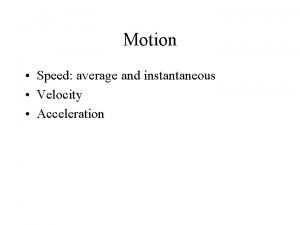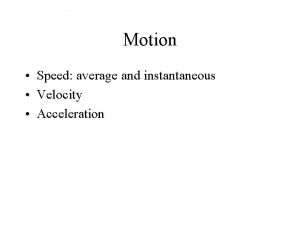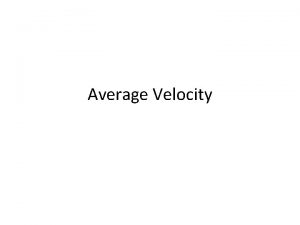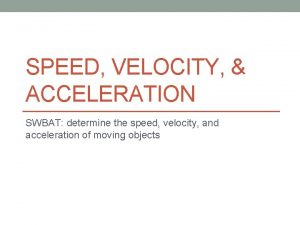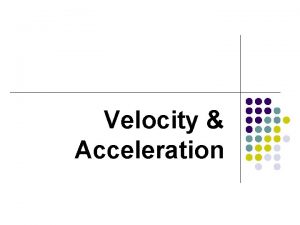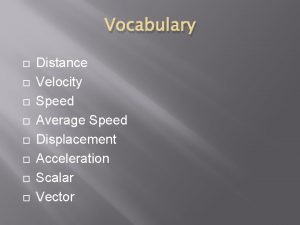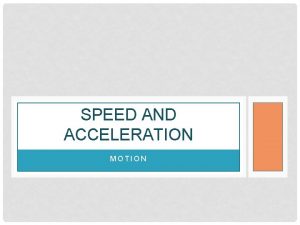Velocity and Acceleration Average speed Speed is a












- Slides: 12

Velocity and Acceleration

Average speed Speed is a scalar variable Unit = length over time (m/s)

Instantaneous velocity ØSpeed and direction of object at a particular instant in time ØVelocity is a vector variable

Average velocity vavg = ∆ d = displacement t time interval

Average velocity Another formula for average velocity Unit = length over time (m/s)

acceleration • Definition - Rate at which velocity changes • Acceleration is a vector

acceleration aavg = ∆v/t ∆v: change in velocity ∆t: change in time (time interval) ∆v = vf – vi

SCALAR VECTOR (Magnitude) (Magnitude & direction) Distance Position Displacement Velocity Acceleration Speed

Speed and Velocity Video https: //www. youtube. com/watch? v=DRb 5 PSx. Jer. M https: //www. youtube. com/watch? v=-6 lrr 6 -ADY 0

Tumble Buggies Minilab Step 1: Get a buggy, whiteboard, meter stick, and marker. Write down buggy color and letter on your white board. Step 2: Using your phone as a timer and a meter stick to measure distance, collect 710 distance vs. time data points (i. e. distance travelled in 1 s, 2 s, 3 s, etc. ), create a data table, and graph distance vs. time by plotting the points on your white board. Step 3: Use the slope of your plotted line to determine the velocity of your buggy.

Tumble Buggies, cont. Step 4: Join another group that has a different color buggy. Scenario 1: Using the two graphs each group created, determine where and when the blue buggy will catch up to the red buggy if the red buggy starts 3 m ahead of the blue one. Test your prediction.

Tumble Buggies, cont. Scenario 2: Using your graphs, determine where and when the two buggies will collide if they start 5 m apart facing each other. Scenario 3: Compare graphs as a class and determine which two buggies are the fastest. Which are the slowest? Scenario 4: Class pick!
 Second equation of motion
Second equation of motion Is v final velocity
Is v final velocity Dynamics acceleration equation
Dynamics acceleration equation Speed, velocity and acceleration quiz
Speed, velocity and acceleration quiz Speed velocity and acceleration problems answers
Speed velocity and acceleration problems answers 21bwundoqno -site:youtube.com
21bwundoqno -site:youtube.com Speed velocity and acceleration study guide answers
Speed velocity and acceleration study guide answers Speed equals distance
Speed equals distance Are speed velocity and acceleration the same thing
Are speed velocity and acceleration the same thing What is acceleration
What is acceleration Instantaneous velocity vs average velocity
Instantaneous velocity vs average velocity How to calculate average speed from a distance time graph
How to calculate average speed from a distance time graph How to calculate distance
How to calculate distance



